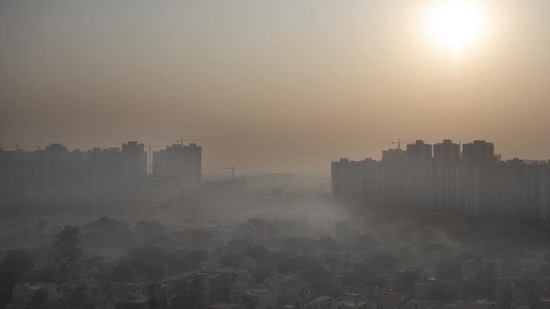Dwarka tops list, Anand Vihar second among air pollution hot spots in Delhi
Dwarka has stayed in the top five list for nine out of the 12 days, and Anand Vihar on eight days, shows CPCB’s daily air quality bulletins
New Delhi Dwarka, Anand Vihar, Mundka and Shadipur have spent at least four days in the daily list of Delhi’s top five pollution hot spots since October 17, according to data from the Central Pollution Control Board (CPCB).

Dwarka has stayed in the top five list for nine out of the 12 days, and Anand Vihar on eight days, shows CPCB’s daily air quality bulletins, underlining the need for immediate local measures to curb pollution in these areas where air has consistently stayed harmful.
As the air quality in Delhi has begun worsening, Central Pollution Control Board has started releasing daily air quality reports, featuring the day’s top five most polluted locations across Delhi and NCR. The bulletin features the daily farm fire count, the daily Air Quality Index (AQI), meteorological conditions and forecast for the next day by both the India Meteorological Department (IMD) and the Indian Institute of Tropical Meteorology (IITM).

Currently, Delhi has 13 pollution hot spots that the CPCB identified in 2018, including Rohini, Okhla Phase-2, Punjabi Bagh, Vivek Vihar, Wazirpur, Jahangirpuri, RK Puram, and Narela.
The other locations which feature regularly on the top five most polluted hot spots include Nehru Nagar, which featured on five days, Mundka (four days), Shadipur (four days) and Dilshad Garden (four days).
On October 5, Delhi environment minister Gopal Rai said that 150 pollution hot spots will be identified across the city for widespread and targeted interventions against local sources of pollution. “The 13 pollution hot spots that we had identified last year were based on consistently high levels of pollution in these areas. These 150 hot spots, however, will be selected based on the complaints of waste burning, open dumping and traffic jams that we received via the green Delhi app. We will be keeping a close watch on these areas this time from our green war room, and immediate action will be taken to control the sources of pollution there,” Rai said.
Prashant Gargava, CPCB member secretary told HT that these reports were being shared with different government agencies as well as the municipal corporations, so that they can initiate suitable action. “Agencies will be better prepared once they know air quality is expected to deteriorate. Similarly, we have asked them to look at the data and act on pollution hot spots accordingly. Sprinkling water on unpaved roads and at construction sites, mechanised road sweeping, and controlling burning of waste can easily be enforced,” said Gargava.
Experts said the data should be shared with citizens as well as agencies for better enforcement of measures to bring pollution under control at the hot spots.
“We have already adopted a hot spot-management approach for 13 pollution locations, but we need to know the local sources of pollution at each spot, and how quick the agencies can respond. If one knows the top five most polluted locations, short-term measures such as the sprinkling of water could be done for instance,” said Anumita Roy Chowdhury, executive director, research and advocacy at the Centre for Science and Environment (CSE).
Data shows that besides hot spots, areas that have not been added to the list, have been consistently reporting high pollution levels. For instance, Mundka features in the original list of 13 pollution hot spots, Shadipur, Dilshad Garden and Nehru Nagar don’t.
“Agencies need to keep that in mind too and may revise pollution hot spots going ahead,” Chowdhury added.
Mukesh Sharma, professor of civil engineering at IIT Kanpur and part of the team which will carry out real-time apportionment of sources of pollution in Delhi, said that though certain sources of pollution cannot be controlled in the short-term, but steps can always be taken to curb sources such as road dust and congestion.
“Currently, this data can still guide action on the ground wherever required. In future, we need to identify locations that may be hot spots, and the potential sources that are responsible for highe levels of pollution,” said Sharma.
Stay updated with all top Cities including, Bengaluru, Delhi, Mumbai and more across India. Stay informed on the latest happenings in World News along with Delhi Election 2025 and Delhi Election Result 2025 Live, New Delhi Election Result Live, Kalkaji Election Result Live at Hindustan Times.
Stay updated with all top Cities including, Bengaluru, Delhi, Mumbai and more across India. Stay informed on the latest happenings in World News along with Delhi Election 2025 and Delhi Election Result 2025 Live, New Delhi Election Result Live, Kalkaji Election Result Live at Hindustan Times.






